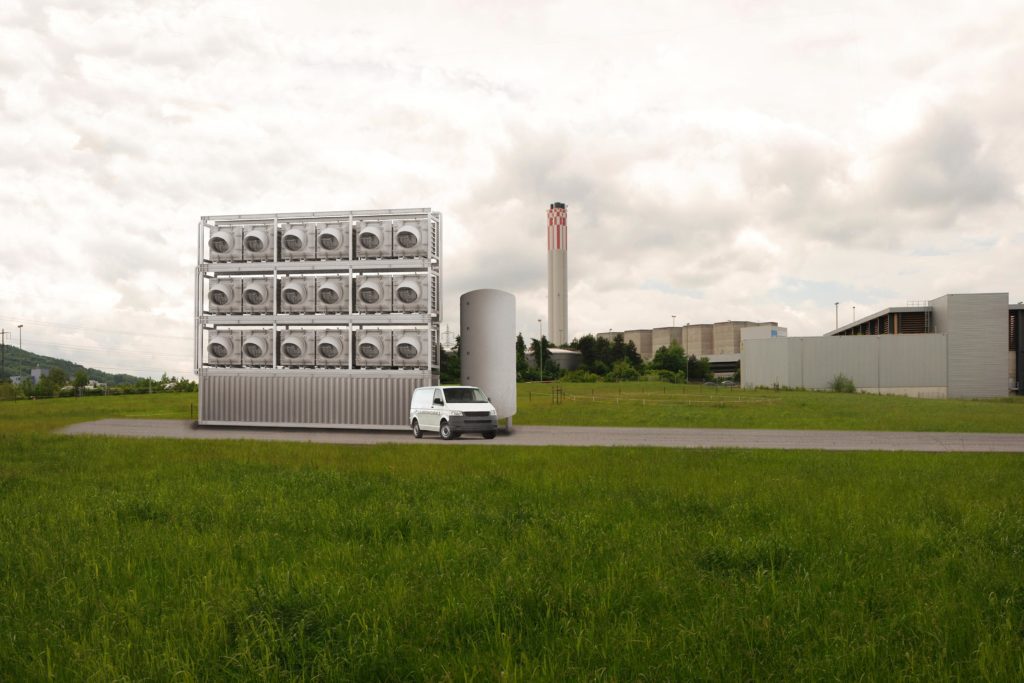
Is it time to get serious about geoengineering?
Several techniques fall under the umbrella term “geoengineering,” a field of study that focuses on limiting the effects of climate change by deliberately manipulating the earth’s climate system.

Several techniques fall under the umbrella term “geoengineering,” a field of study that focuses on limiting the effects of climate change by deliberately manipulating the earth’s climate system.
Geoengineering is an explicit recognition that we’ve reached a point where we need to be really worried. People don’t want to recognize that.”
As the RV Polarstern crept out of Cape Town Harbor, Victor Smetacek gathered his 49-member crew on deck to watch the lights of the city slowly fade from view. It was January 7, 2009, a cool South African summer evening. And after nearly four years of painstaking preparations, they had finally begun LOHAFEX, the longest and most comprehensive ocean iron fertilization experiment ever attempted.
It hadn’t been easy. Smetacek, a professor of biological oceanography at Germany’s Alfred Wegener Institute, and Wajih Naqvi, a senior scientist at India’s National Institute of Oceanography had published papers in support of the 70-day voyage. They’d trained a joint German-Indian crew and secured the RV Polarstern, a 387-foot German icebreaker operated by the Alfred Wegener Institute. And they’d won approval from both the German and Indian governments.
Finally, the Polarstern was loaded with 20 tons of iron sulphate and headed toward a remote eddy in the Southern Ocean. The crew planned to use the swirling eddy like a giant beaker, pumping iron-rich slurry into the water to fertilize a bloom of plankton and algae. The bloom, it was hypothesized, would absorb atmospheric carbon dioxide as it grew and multiplied. Then, as the organisms died, they’d sink to the bottom of the ocean, permanently locking away their absorbed carbon. The team planned to monitor the bloom over the course of several weeks to determine just how effective it was at absorbing and locking away carbon. But even as the Polarstern left port, opponents were mounting resistance that threatened to stop it in its tracks.
Ocean iron fertilization is one of several techniques that fall under the umbrella term “geoengineering,” a field of study that focuses on limiting the effects of climate change by deliberately manipulating the earth’s climate system. Most geoengineering tactics aim to do this by either making the Earth more reflective to bounce more sunlight back into space, or – like ocean iron fertilization – by removing heat-trapping carbon dioxide from the atmosphere.
Researchers have devised a variety of possible ways to do this, from launching reflective mirrors into space to painting parking lots and roofs white to reflect sunlight. But two tactics – the ocean iron fertilization technique researched by LOHAFEX and albedo modification, which would use atmospheric aerosols to shade the Earth – have attracted the most attention in recent years. Both aim to co-opt or mimic natural processes in an attempt to cool the planet and prevent the worst consequences of climate change. Both are distinctive because of their relatively low up-front costs, their sweeping scope and their possible consequences for the planet. And both have attracted ardent supporters and opponents.
Some scientists see the tactics as potentially vital, if risky, fields of study that we can’t afford not to explore as time ticks away in the fight against climate change. Others see them as irresponsible and potentially disastrous distractions from the all-important work of reducing carbon emissions. The contentious situation has made research difficult; with funding from U.S. agencies scarce, many scientists have been forced to scale back their work.
Among those scientists is Phil Rasch, chief scientist for climate science at Pacific Northwest National Laboratory. An expert in climate modeling and atmospheric chemistry, he has found it difficult to get funding for his research into atmospheric aerosols. He believes that much of the controversy stems from simple reluctance to acknowledge the seriousness of climate change – and the role of humans in causing it. He argues that it may not be wise to let new ideas languish as changes to the Earth’s climate accelerate.
“We would all like to believe that we’re not harming the planet,” he said. “And any time you consider something like geoengineering, it’s an explicit recognition that we’ve reached a point where we need to be really worried,” he said. “People don’t want to recognize that.”
Reticence about geoengineering research has led to painfully slow progress for some ideas. Ocean iron fertilization, for example, was initially proposed back in the 1980s by the late oceanographer John Martin. He hypothesized that iron-rich dust blowing off the coasts of Africa and Australia caused the last ice age by fertilizing massive plankton and algae blooms in the ocean. He believed that it might be possible to use artificial iron fertilization to slow or even reverse climate change caused by carbon dioxide emissions. And he launched his idea with what’s still perhaps the most quotable quote in climate science: “Give me half a tanker of iron and I’ll give you an ice age.”
But as LOHAFEX set sail two decades later, the science was still poorly understood. Earlier experiments had shown that iron fertilization does indeed cause massive, carbon-absorbing plankton blooms, but whether those blooms were effective at long-term sequestration of carbon was unclear. And a rush of commercial interest had damaged the credibility of the field, scaring off many scientists and making the LOHAFEX experiment an uphill battle from the beginning.
“Iron fertilization got this reputation as a mad scientist idea,” Smetacek said. “It had attracted the interest of venture capitalists who wanted to use it to sell carbon credits, and that scared the daylights out of many scientists.”
The controversy caught up with the crew of the Polarstern seven days into LOHAFEX, when the German government ordered the crew to halt its work. Though they had previously approved the experiment, protests from a Canadian environmental group and uncertainty over whether the experiment violated a vaguely worded United Nations resolution caused regulators to walk back their support. The massive ship and her crew were in limbo for six days. They used the time as productively as they could, but it looked as if they might have to abandon the experiment and return to port.
Finally, on the night of January 26, the Polarstern received a phone call with good news: Germany’s Federal Ministry of Research had cleared the ship for a scaled-down experiment, authorizing the release of six tons of iron. Once the cheering subsided, the crew got to work immediately, pumping the iron solution through a hose into the ship’s propeller wash.
The team monitored the fertilized eddy for 39 days. Ultimately, they found that the plankton bloom they caused wasn’t very efficient at locking away carbon in the deep ocean. Much of it was eaten by scavengers, recycling the captured carbon back into the atmosphere before it reached the ocean floor.
Partly as a result of the LOHAFEX study, most scientists now agree that the risk of disrupting the ocean’s ecosystems with iron fertilization far outweighs what would likely be a small reduction in atmospheric carbon dioxide. A 2015 National Academy of Sciences report that evaluates several possible geoengineering technologies recommends curtailing further ocean iron fertilization research and focusing resources on other, more promising areas of study.
But LOHAFEX shows that even when research doesn’t directly result in a viable technology, it can move the science forward, answering questions and informing future research. Scientists like Rasch believe that we’ll need to pursue that research more decisively to determine whether other, more promising new ideas could help us manage climate change and its consequences.
“We don’t have a lot of time to mess around,” he said. “Because some of the changes we’re anticipating will at some point become irreversible.”

Albedo modification is a geoengineering idea that today is more promising – and yet possibly even more controversial – than ocean iron fertilization. It aims to counteract climate change by altering the Earth’s reflectivity (also called its albedo). This increased reflectivity would bounce a slightly greater percentage of sunlight back into space, providing a sort of sunshade for the Earth and lowering global temperatures.
The most-studied way to do this, called stratospheric sulfate injection, would blast a fine aerosol of sulfur droplets high into the stratosphere. These droplets would shroud the earth in a gauzy mist that would reflect and scatter sunlight. Planet-wide temperatures would begin to drop in a matter of months, and they’d stay that way until the particles fell out of the atmosphere in one to two years. A sustained program of periodic injections would be required to maintain the cooling effect.
Sulfate injection may sound like a pie-in-the-sky idea, but in fact, it’s not as far-fetched as it sounds. It mimics a well-documented natural process – the cooling that occurs when massive volcanic eruptions release huge quantities of sulfur. The largest recent example happened in 1991 when the Mount Pinatubo eruption spewed millions of tons of sulfur dioxide into the atmosphere. Temperatures began to drop within months and the planet saw an average temperature reduction of around .7 degrees Fahrenheit. The United States experienced one of its coldest and wettest summers in decades. Experts say that artificial injections of sulfates could have a similar effect.


The second major albedo modification tactic under study, marine cloud brightening, aims to shade the planet by spraying aerosols of seawater into the air over the ocean. The water would evaporate, leaving behind tiny particles of salt. Water would condense on these particles, thickening existing clouds and encouraging new ones to form. It’s predicted that this could shade the planet and reduce global temperatures. Seawater sprays have a far shorter life in the atmosphere than sulfates – around a week – so the sprays would have to be more or less continuous to maintain a cooling effect.
Albedo modification is considered more feasible and less expensive than most other geoengineering ideas – sulfate particles could be blasted into the sky with artillery shells or sprayed from modified commercial aircraft, while cloud-brightening mists could be sprayed from unmanned ships. Preliminary cost estimates suggest that a sustained program of sulfate injection could be carried out for a few billion dollars a year – well within reach of any number of industrialized countries.
Also tantalizing to researchers is the fact that albedo modification could cause a lot of cooling, and fast. It could begin lowering temperatures within months, while other ideas would take decades. That has piqued the interest of climate experts like Ted Parson, a former U-M professor of law, environment and public policy who’s now faculty co-director of the Emmett Institute on Climate Change and the Environment at the University of California, Los Angeles School of Law. Parson believes that it could be an important stopgap measure if it’s someday determined that a climate catastrophe – say, the collapse of the Greenland ice sheet – is imminent.
“It’s the only thing we could possibly do to prevent terrible things from happening, once we know they’re happening,” he said.

So, inject an aerosol, cool the planet, fix climate change. Right? Wrong. Jimmying the Earth’s climate system with albedo modification comes with consequences that even supporters acknowledge to be planet-wide and, in many cases, poorly understood.
For starters, albedo modification wouldn’t give us back our old climate. It would throw a wrench into the Earth’s dizzyingly complex weather system. Computer projections suggest that regional precipitation, wind and temperature patterns could change in unpredictable ways, possibly disrupting world food supplies and ecosystems. Sulfate injection would also likely destroy some of the ozone in the upper atmosphere, delaying the recovery of the ozone hole over the Arctic and raising skin cancer rates.
But perhaps the biggest objection to albedo modification is what it wouldn’t do. It wouldn’t address the root cause of climate change – the billions of tons of carbon dioxide that humans continue to pump into the atmosphere. And the one thing that nearly everyone in the climate change community agrees on is that slashing carbon emissions must be the top priority for managing climate change. Some worry that pursuing albedo modification would undermine that priority by giving us a planet-wide snooze button for climate change – masking its effects and tempting us to continue spewing carbon into the atmosphere.
Supporters and opponents of sulfate injection research agree that pursuing albedo modification without carbon reduction would be disastrous. It would require larger and larger injections that would be less and less effective against the carbon dioxide piling up in the atmosphere. And if we ever stopped, all that masked warming would catch up to us within a few years, causing a massive shock to the planet. It would give future generations little choice but to continue increasingly ineffective injections, delaying an inevitable catastrophe.
Given albedo modification’s massive scope, it’s not surprising that it has sparked a backlash even more pronounced than the controversy Victor Smetacek experienced with ocean iron fertilization. Some experts believe that even conducting research into planet-wide climate intervention poses a moral hazard that’s too risky even to consider. They argue that its massive risks outweigh any possible benefits and that preliminary research is the start of a slippery slope toward implementation.
“Wildly, utterly, howlingly, barking mad,” is how University of Chicago climate scientist Raymond T. Pierrehumbert famously summed up his feelings about albedo modification in an article published in Slate magazine. Al Gore called it “insane, utterly mad and delusional in the extreme” in an interview with the Guardian.
Even those who support additional research acknowledge that albedo modification technologies come with a list of unknowns that’s long and, in many places, terrifying. The 2015 report from the National Academy of Sciences offered a very cautious endorsement of further research, acknowledging its potential benefits but noting that it poses serious risks for the planet.
Parson, however, argues that a temporary and carefully planned program of albedo modification could potentially offer a way to slow the pace of temperature rise, buying us time to implement more permanent strategies and giving plants and animals time to adapt to a planet that will inevitably grow hotter. But he cautions that having a larger plan – and pairing it with massive carbon reduction – is absolutely essential.
Experts like Parson and Rasch agree that planet-wide climate intervention is a sobering prospect. But they argue that the threat from climate change is so dire that we can’t afford not to conduct basic research into the feasibility of albedo modification and other climate intervention options. They stress, however, that even if it someday becomes feasible, it should be treated as a last resort.
“Nobody who’s not crazy thinks this is an attractive thing,” Parson said. “But we may need something like this available to use. And to know whether we can use it and how safely we can use it, we need research.”
So far, uproar around the risks of albedo modification has largely squelched that research. No significant field experiments have been done on sulfate injection technology, even though the basic idea has been around for decades. Cloud brightening hasn’t fared much better, with only one small and inconclusive ocean experiment. To date, research has been largely limited to computer models that simulate the effects of albedo modification.
That doesn’t mean new research ideas don’t exist – a number of proposals for new field experiments are currently in a holding pattern, waiting for new funding and a new sense of urgency about climate change. One of them comes from Rasch and a group of his colleagues – they’ve proposed an experiment that would release a fine mist of aerosol particles into the atmospheric boundary layer, the layer of the atmosphere closest to the Earth’s surface.
Rasch says the experiment would be helpful both to better understand the effects of any future albedo modification effort and to shed new light on how clouds and other naturally occurring aerosols affect the Earth’s climate. But the effort has been slow to get off the ground, largely because the funding agencies that could back the work are concerned about the controversy it could generate.
“None of us scientists are happy with the lack of recognition about climate change’s importance and our lack of ability to make progress,” he said. “We’re at a point in time where it would be very useful to have some field experiments that would help us understand these aspects of the climate better and challenge the models we’ve used to predict climate change.”
Joyce Penner, the Ralph J. Cicerone Distinguished University Professor of Atmospheric Science and associate chair of Climate and Space Sciences and Engineering, is another climate scientist who believes it’s time to move beyond theoretical models. Working from an office in U-M’s Space Research Building on North Campus, she has spent decades studying atmospheric aerosols – both the natural variety that makes up clouds and the artificial aerosols that sulfate injection would spray into the sky.
Penner helped write the 2015 National Academy of Sciences report on geoengineering technologies. She believes that the behavior of atmospheric aerosols is the most crucial unknown in the long list of questions about albedo modification. That’s because aerosol injections are influenced by a huge number of variables: the quantity of aerosol injected, the location of the injection, the size of the individual aerosol particles, cloud conditions at the time of injection and many more.
To get a handle on the specifics of albedo modification, we need to understand these factors. Right now, we don’t. In fact, Penner says, most of the computer model simulations conducted so far don’t factor in the behavior of aerosols at all. They simply “turn down the sun,” measuring the consequences of a theoretical reduction in sunlight rather than the effects of an actual aerosol.
“Every model I know makes some assumptions, but it’s hard to verify that your model is correct because we don’t have adequate observations,” Penner said. “And the aerosol problem is so regionally diverse that you can’t trust an answer in one place as being good for the whole world.”
Like Rasch, she believes that small-scale field experiments could help us get the knowledge we need to move the science forward. They would be far too small to affect the climate or alter weather patterns, but they’d give researchers a better handle on the complex workings of aerosols in the atmosphere.
“True science and understanding only advances in my field when you have experiments, or experimental data,” she said. “If models are all you’re doing, you’re not advancing knowledge. You’re doing experiments whose validity you don’t know a lot about.”
Experiments like those proposed by Penner and Rasch could go a long way toward helping us better understand the potential risks and benefits of geoengineering, including albedo modification. And perhaps even more importantly, they would give us a better fundamental understanding of how our climate system works. Whether or not we ever use geoengineering, it’s information we can’t afford to be without as the consequences of climate change loom larger.
“The longer you wait, the worse the whole problem gets,” Penner said. “More needs to be done and the world’s powers need to understand that we can’t wait.”

While albedo modification has received a lot of attention, researchers have proposed other geoengineering ideas that could help manage climate change. Unlike albedo modification, most of them involve cooling the planet by removing carbon from the atmosphere. Here are some of them.
Direct air capture and sequestration would use machinery to suck carbon dioxide directly out of ambient air. It could then be stored deep underground, likely in depleted oil and gas wells or in naturally occurring underground deposits of salt water. Early research suggests that it’s at least theoretically possible to capture carbon in the massive quantities that would be required to make a dent in climate change.Several startup companies, including New York-based Global Thermostat and Switzerland’s Climeworks AG, have built demonstration-scale machines that successfully capture carbon from the air. They’re a bit like massive car radiators – a fan pushes air through a series of fins, over which a carbon dioxide absorbing liquid flows. The CO2-rich solution flows to a processing unit, which extracts the CO2 as a concentrated gas.
The technology is still in the very early stages of research. One big hurdle is the large amount of energy required to extract the carbon dioxide from the liquid solution. Researchers are working on carbon-neutral energy sources, including solar, nuclear or waste heat generated by industrial processes.
Bioenergy with carbon capture and sequestration—also called BECCS—would capture and sequester the carbon that’s released when biomass is burned to generate energy. In this way, the carbon that plants capture naturally would be removed from the carbon cycle, reducing the amount of carbon in the atmosphere.BECCS could use technology that’s already being developed to scrub carbon dioxide from the emissions of coal-burning power plants. If it was deployed on a large scale, it could also create a significant source of energy, helping to offset the use of fossil fuels as it absorbs carbon dioxide.
But finding enough land to grow all that biomass could prove difficult. The world’s demand for food is projected to nearly double over the next 50 years, and demand for land-intensive meat products like beef is increasing. Without an increase in crop yields or a change in world eating habits, biomass crops may lose out to food production.
Silicate and carbonate minerals like sand and limestone make up over 90 percent of the Earth’s crust. As they break down, or weather, they naturally absorb carbon dioxide from the atmosphere, locking it away more or less permanently in solid minerals and ocean sediments. If we waited long enough, weathering would eventually absorb most of the carbon that we’re pumping into the atmosphere. But that would take hundreds of thousands of years, time that we humans don’t have.Scientists believe they may be able to speed up the process with a technique called “enhanced weathering.” The technique would spread finely ground minerals over land or dissolve them in the ocean, creating more surface area that would absorb carbon dioxide more quickly. Initial studies have suggested that this could absorb massive amounts of carbon dioxide from the atmosphere.
But moving enough material to absorb significant amounts of carbon dioxide could require mining and processing hundreds of billions of tons of minerals per year, using huge amounts of energy. Most of these minerals would end up in the ocean, raising a variety of environmental and legal questions. Further study will be needed to determine how enhanced weathering might play out in the real world.
